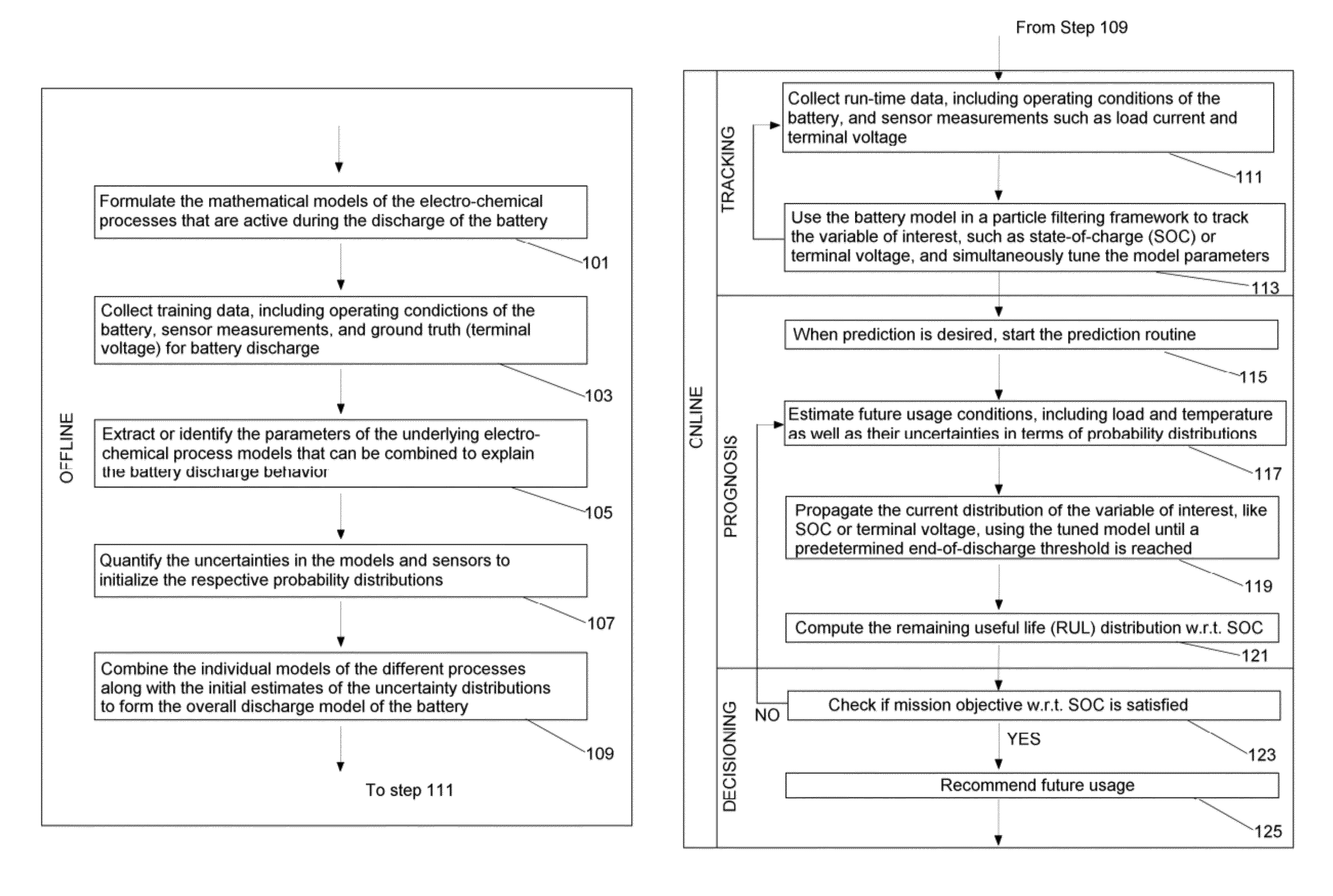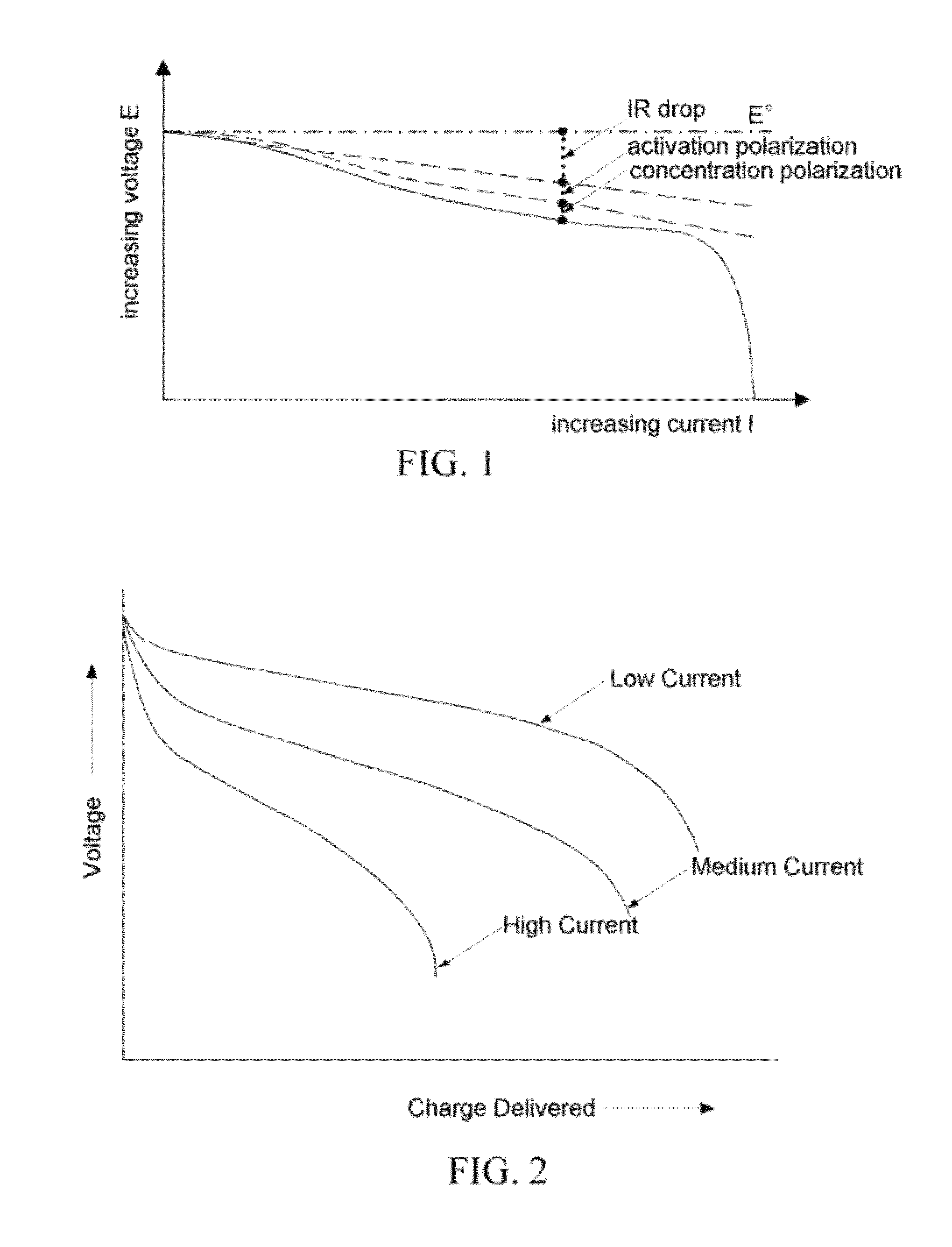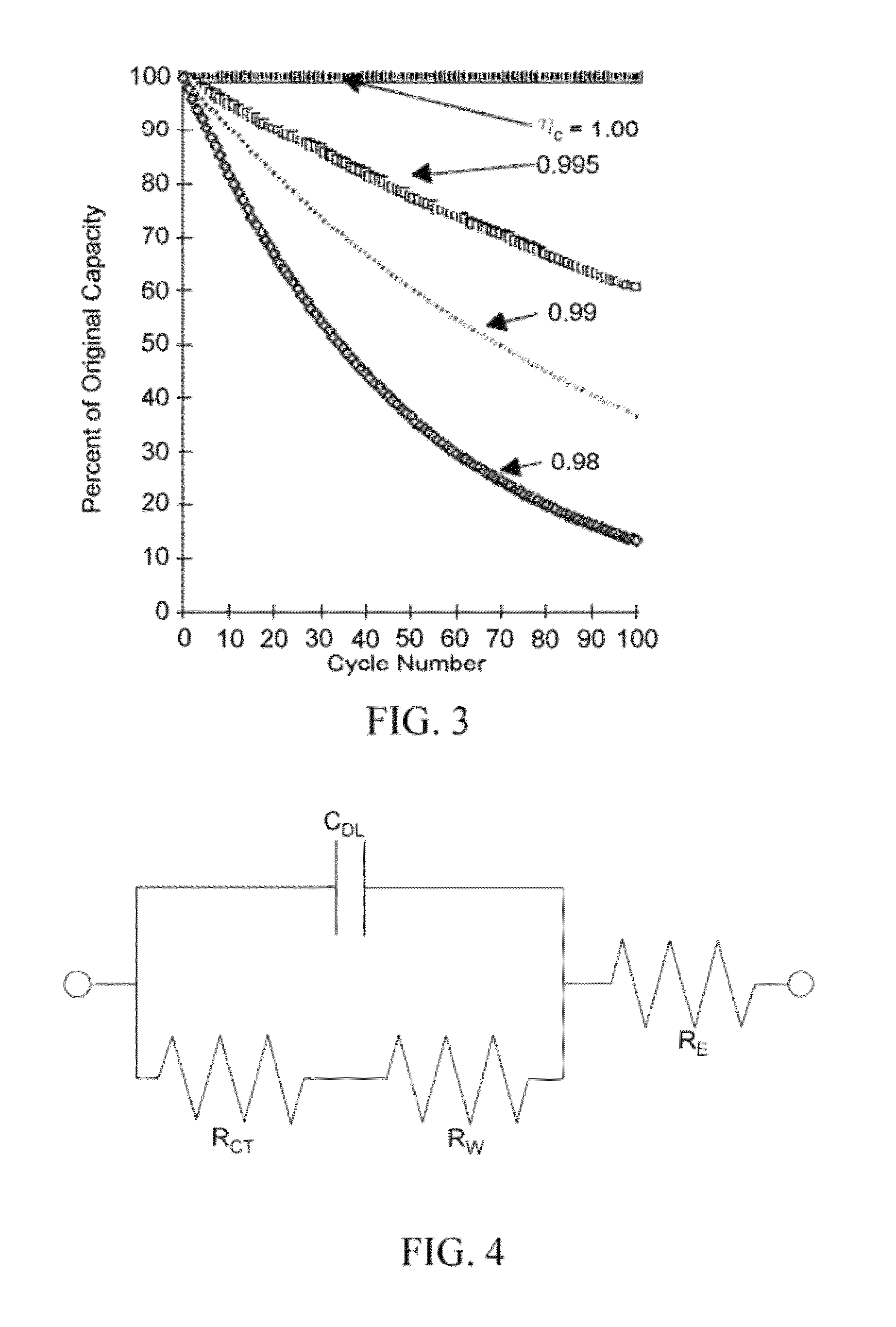Model-based prognostics for batteries which estimates useful life and uses a probability density function
- Summary
- Abstract
- Description
- Claims
- Application Information
AI Technical Summary
Problems solved by technology
Method used
Image
Examples
Embodiment Construction
Li Ion Batteries Characteristics
[0029]Several rechargeable battery technologies are available on the market at present, each having distinct characteristics. However, Li-ion batteries (“LIBs”) are becoming increasingly popular for a variety of applications, from consumer electronics to power tools to electric vehicles and even to space applications. Li-ion batteries have a number of important advantages over competing technologies (Huggins, 2008):[0030]Since the electrodes of a Li-ion battery are made of lightweight lithium and carbon, they are usually lighter than other types of rechargeable batteries of the same size. Lithium is also a highly reactive element; hence a lot of energy can be stored in its atomic bonds. This translates into a very high energy density for Li-ion batteries as compared to other chemistries like lead-acid or NiCd (nickel-cadmium) or NiMH (nickel-metal hydride).[0031]LIBs have a low self-discharge rate so that they hold their charge for longer periods of t...
PUM
 Login to View More
Login to View More Abstract
Description
Claims
Application Information
 Login to View More
Login to View More - R&D
- Intellectual Property
- Life Sciences
- Materials
- Tech Scout
- Unparalleled Data Quality
- Higher Quality Content
- 60% Fewer Hallucinations
Browse by: Latest US Patents, China's latest patents, Technical Efficacy Thesaurus, Application Domain, Technology Topic, Popular Technical Reports.
© 2025 PatSnap. All rights reserved.Legal|Privacy policy|Modern Slavery Act Transparency Statement|Sitemap|About US| Contact US: help@patsnap.com



